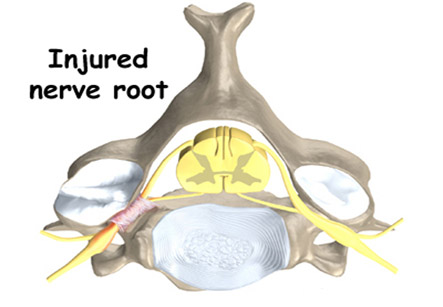Foraminotomy
Introduction
Foraminotomy is surgery to widen the opening in the spine where nerve roots leave the spinal canal. There may be narrowing of the nerve opening (foraminal stenosis).
Purpose of foraminotomy:
A bundle of nerves or nerve root leaves the spinal cord through openings in the spinal column, called the neural foramen. When the openings for the nerve root become narrow, it may put pressure on the nerve. This condition is called as foraminal spinal stenosis.
This surgery may be considered if the symptoms of foraminal stenosis are severe enough to interfere with the daily life. Such symptoms include:
1. Pain in the thigh, calf, lower back, shoulder, arms or hands. The pain can often be deep and steady.
2. Pain while doing certain activities or moving the body a certain way
3. Numbness, tingling, and muscle weakness
We have all the information you need about public and private clinics and hospitals that provide spinal surgery in Iran, Islamic Republic Of with the best quality and lowest possible prices

An MRI is the imaging study of choice to make sure that foraminal stenosis is causing the symptoms. The doctor can decide when the surgery is needed for these symptoms. Spinal stenosis symptoms often become worse over time, but this may happen very slowly.
Before the foraminotomy Surgery:
1. A proper history, examination and few lab tests and scans are done to determine the general health.
2. An MRI is the procedure of choice for the diagnosis of spinal stenosis. The scans are very important for the surgery.
3. Patient should stop anti-inflammatory drugs like aspirin at least a week before surgery.
4. Medications being taken for other conditions like diabetes, heart disease, blood pressure should be continued with advice from the treating doctor.
5. History of smoking or alcohol drinking should be told to the surgeon. Smoking should be stopped if possible as it interferes with the wound healing.
6. Recent history of cough, cold, fever, viral infections, or other illnesses should be informed to the surgeon.
7. Patient is not allowed to eat or drink anything at least 8 to 12 hours before surgery except essential medicines with sips of water.
8. A consent form is signed by the patient regarding permission for getting operated.
Procedure:
• Foraminotomy takes pressure off of a nerve in the spinal column and allows it to move more easily. It may be performed at any level of the spine. This surgery is performed under general anesthesia which means the patient is asleep during the surgery and feels no pain.
• The patient lies face down on the operating table. The surgeon makes an incision in the middle of the back of spine. The length of the incision depends on how much of the spinal column is planned to be operated on.
• Skin, muscles, and ligaments are retracted to the side. The surgeon may use a surgical microscope to see inside the back.
• Some bone is cut or shaved away to access the nerve root opening (foramen). Any disk fragments in the canal are removed. Other bone may also be removed at the back of the vertebrae to make more room.
• If the surgeon is worried that the spine will not be stable after the bone has been removed, the surgeon may also perform a procedure called as spinal fusion.
• The muscles and other tissues are put back in place, and the skin incision is closed with stitches.
After the Procedure:
• Patient is advised to wear a soft neck collar afterwards if the surgery was on the neck. Most people are able to get out of the bed and sit up within 2 hours after surgery. Neck movements should be careful.
• Patient can leave the hospital the day after the surgery. Patient can get back to light work after about 4 weeks.
Risks:
1. Risks for any anesthesia include reactions to medications and breathing problems
2. Risks of any surgery are bleeding and infection in wound
3. Risks for this particular surgery can include:
• Infection in vertebral bones
• Damage to a spinal nerve, causing weakness, pain, or loss of sensations
• Partial or no relief of symptoms after surgery
• Recurrence of back pain in the future
• Thrombophlebitis
Results:
Foraminotomy for spinal foraminal stenosis will often provide full or partial relief of symptoms. If a spinal fusion and laminectomy are performed, the spinal column above and below the fusion are more likely to develop problems in the future.